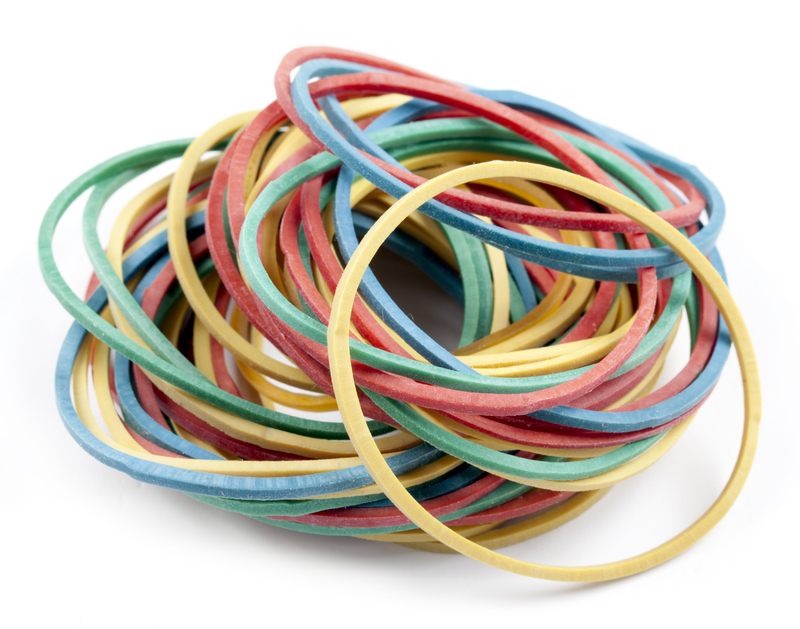Making Pots and Pans Disposal Easy and Sustainable
In our everyday lives, most of us accumulate kitchen cookware over time--some beloved favorites, others worn out or missing handles. Eventually, every kitchen faces that inevitable question: how to dispose of old pots and pans efficiently and sustainably? Landfills are crowded enough, and tossing metal cookware is hardly eco-friendly. But don't worry! In this comprehensive guide, we'll explore easy and sustainable ways to get rid of old pots and pans, including recycling, upcycling, donating, and proper disposal.

Why Sustainable Pots and Pans Disposal Matters
Before you toss your well-used frying pan or a dented stockpot into the garbage, consider the environmental impact. Did you know that metal cookware, when disposed of improperly, can contribute to landfill waste and even leak toxins into the soil? With a little effort, responsible disposal of kitchenware can conserve resources, reduce pollution, and maybe even help someone in need.
The Environmental Impact of Improper Disposal
- Landfill Overflow: Millions of non-biodegradable pots and pans take centuries to break down in landfills.
- Resource Waste: Pots and pans are typically made from valuable metals like aluminum, stainless steel, and cast iron--all recyclable.
- Toxic Leaching: Certain coatings may leach toxins as they degrade, harming soil and water sources.
How you choose to dispose of kitchenware can make a real difference. Let's break down your options for disposing of cookware sustainably.
Identifying What Can be Reused, Recycled, or Disposed
The first step towards sustainable disposal of pots and pans is deciding what can be reused, recycled, or must be discarded. This classification depends on:
- Material Type: Is it metal, ceramic, enamel-coated, or nonstick?
- Physical Condition: Is it broken, dented, or still usable?
- Local Recycling Capabilities: What materials does your community recycling center accept?
Metal Cookware
Aluminum, stainless steel, and cast iron are highly recyclable. If they're not coated with plastic, you're in luck! Scrap metal yards and many community recycling programs accept these materials.
Coated and Nonstick Cookware
Nonstick surfaces, like Teflon, complicate recycling. If your pans are significantly damaged or flaking, recycling might not be possible--but don't toss them just yet! Read below for creative ideas or check specialized recyclers.
Ceramic and Glass Pots
Unlike metal, most municipal recycling programs don't accept ceramics or glass cookware through curbside pickup. Still, some specialized centers or reuse programs will.
Easy and Eco-Friendly Pots and Pans Disposal Methods
1. Recycle Metal Pots and Pans
With metal comprising the bulk of most cookware, recycling old pots and pans is often the greenest (and sometimes, the easiest) option.
- Check Local Recycling Guidelines: Confirm whether your municipal recycling program accepts scrap metal. Many request delivery to a special drop-off site rather than curbside bins.
- Use Scrap Metal Yards: These businesses accept almost any metal cookware, regardless of condition. Some may even pay a small fee.
- Prepare for Recycling: Remove plastic parts, rubber handles, or non-metal lids--these are usually not recyclable.
2. Donate Usable Cookware
If your pans are still in reasonable condition (no peeling, cracks, or broken handles), consider donating pots and pans. This extends their useful life and supports the community.
- Goodwill and local thrift stores
- Homeless or women's shelters
- Refugee support programs and food banks
- Community kitchens and soup kitchens
*Tip: Clean donated items thoroughly and check organization guidelines to see what's accepted.
3. Upcycle and Repurpose Old Pots and Pans
For the creative at heart, upcycling cookware breathes new purpose into tired pots and pans. Here are fun ideas to transform them:
- Planters: Drill holes for drainage and use them for herbs or flowers on your patio.
- Wall Art: Paint or enamel your pans and hang as decorative kitchen art.
- Birdbaths or Feeders: Use large pans to provide water or food to local wildlife.
- Organizers: Old muffin tins make great trays for office supplies or jewelry.
4. Specialized Recycling for Nonstick and Coated Cookware
Nonstick pans are tricky, but you're not out of luck. Some manufacturers and recycling programs accept nonstick cookware recycling:
- Manufacturer Take-Back Programs: Brands like Calphalon and TerraCycle offer mail-in recycling for old pots and pans, especially nonstick types.
- Specialty Metal Recycling Centers: Search for local facilities that accept Teflon-coated or ceramic cookware.
Best Practices for Sustainable Pots and Pans Disposal
Clean Before Disposing
Whether donating, recycling, or repurposing, wash and remove food residue from your old cookware. This ensures acceptance and prevents pest or odor issues.
Remove Non-Metal Parts
Plastic handles, glass lids, and silicone inserts often can't go in metal recycling. Disassemble as much as you can. If unscrewing parts is tough, call a scrap yard to ask what's acceptable.
Separate Cookware Types
Keep like materials together--group all aluminum, steel, or cast iron pots and pans. Some recycling centers require you to sort items before drop-off.
What to Avoid: Unsustainable Pots and Pans Disposal
- Never Leave Appliances Curbside: Unless your city's bulky trash day specifically allows it, curbside disposal leads to landfill waste.
- Avoid Regular Trash Bins: Pots and pans can damage garbage trucks, aren't biodegradable, and take up valuable landfill space.
- Do Not Incinerate: Burning cookware releases toxins--especially with nonstick coatings.
Frequently Asked Questions About Pots and Pans Disposal
What Should I Do with Broken Pots and Pans?
Even damaged cookware can often be recycled as scrap metal. Nonstick or ceramic-coated types are more complicated but don't belong in household trash. Seek out specialty recyclers when possible.
Can I Put Pots and Pans in the Recycling Bin?
Rarely. Most curbside recycling programs do not handle large metal objects. Instead, use designated collection centers or scrap metal dealers.
Are Old Pots and Pans Safe to Donate?
Donate only if they're clean, safe, and in working condition. Don't donate pans with flaking nonstick surfaces or heavy rust, as these could be hazardous.
How Can I Tell What My Pans are Made Of?
Look for marks on the bottom (e.g., "stainless steel," "aluminum"), or note the weight and magnetism -- cast iron and steel are magnetic; aluminum isn't.

Bonus Tips: Prolonging the Life of Your Cookware
- Invest in Quality: Durable cookware lasts longer and needs less frequent replacement.
- Proper Cleaning: Follow manufacturer instructions to prevent warping, pitting, or flaking.
- Avoid Overheating: Overheating ruins coatings and shortens the lifespan of pots and pans.
- Regular Maintenance: Tighten loose handles, season cast iron, and avoid abrasive cleaners on delicate surfaces.
Conclusion: Making Pots and Pans Disposal Green and Effortless
Kitchen decluttering doesn't have to be a guilty experience! Whether you're clearing out rusted skillets or swapping to a new set, easy, sustainable ways of disposing of old cookware are available in nearly every community. Recycle, donate, or upcycle--each path benefits you and the planet.
Making pots and pans disposal easy and sustainable is about awareness, creativity, and a little upfront effort. Next time you say goodbye to an old saucepan, remember: your small step toward eco-friendly kitchenware disposal is part of a bigger movement to reduce waste and protect our environment.
Ready to make your kitchen a little greener? Take inventory today, and use these tips to make responsible cookware disposal part of your sustainable lifestyle!
